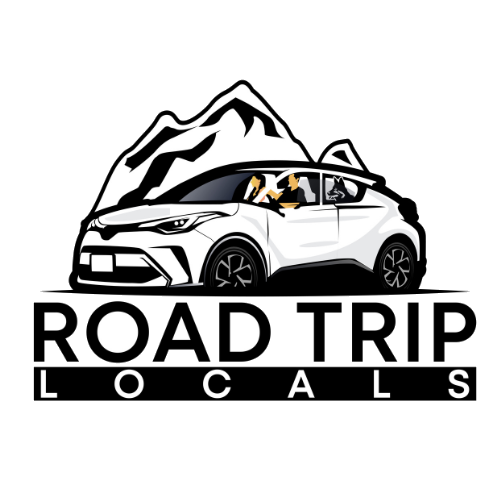Beginner’s Guide to Yellowstone National Park
So, you’re thinking about going to Yellowstone. Amazing! But maybe you’ve started researching and realized: whoa, this place is huge. And kind of confusing. Geysers here, bison there, five entrances, one massive loop, and no cell service?! If your brain’s already overloaded, don’t worry. This guide is your no-nonsense, get-you-started Yellowstone cheat sheet.
We’re going to break it down piece by piece: what it is, where to stay, when to go, what to see, and how to not lose your mind (or your way).
📍 What is Yellowstone, exactly?
Yellowstone is America’s first national park (est. 1872) and it’s massive—we’re talking 3,500+ square miles across Wyoming, Montana, and Idaho. Most of the roads and attractions are in the northwest corner of Wyoming, though.
It’s famous for:
Geysers and hot springs (like Old Faithful and Grand Prismatic)
Wildlife (bison, bears, wolves, elk, and more)
Jaw-dropping scenery (waterfalls, canyons, mountains, valleys)
But here’s the thing: Yellowstone is not like a city with one main downtown. Yellowstone is more like a state-sized wilderness with natural wonders spread everywhere. Planning really matters here.
First Things First: Learn the Lay of the Land
Here’s the Yellowstone 101 map-in-your-head you need:
The main road through the park is shaped like a figure 8, called the Grand Loop Road.
There are five entrances: North, Northeast, South, East, and West.
North Entrance (Gardiner, MT): The only one open year-round. Great for wildlife and access to Mammoth Hot Springs.
West Entrance (West Yellowstone, MT): Most popular, close to geysers like Old Faithful and Grand Prismatic.
South Entrance (Jackson Hole, WY): Connects to Grand Teton National Park.
East Entrance (Cody, WY): Most remote. Long scenic drive to get into the main areas.
Northeast Entrance (Cooke City, MT): Also remote, but access to Beartooth Highway in the summer.
It takes about 2.5 hours to drive from the South Entrance to the North Entrance—or from the West Entrance to the East Entrance. And that’s without stopping for geysers, traffic, or bison in the road (which you definitely will).
🗓️ When Should You Go?
Short answer: Summer is easiest. Spring and fall are best for wildlife. Winter is magical but limited.
Summer (late May–early Sept): Everything’s open, but it’s crowded. Reserve early.
Spring (late April–early June): Fewer people, baby animals, but some roads are still closed.
Fall (Sept–Oct): Elk rut, fall colors, fewer crowds. Great hiking temperatures, but things start to shut down.
Winter (Dec–March): Snowy and stunning. Only North Entrance is open to cars. Other areas are snowcoach or snowmobile access only.
If you’re a first-timer, early June through early October is your best bet.
🛏️ Where Should You Stay?
This is key. Since Yellowstone is so spread out, where you stay affects what you’ll see.
Inside the park: You can stay at park lodges or campgrounds, but book 6–13 months ahead. (The sooner, the better.) Great if you want to beat the crowds in the morning, but park lodges are generally the most expensive option.
Outside the park:
Gardiner, MT (North Entrance): Wildlife central. Small town feel. Great for early-morning drives into Lamar Valley and Tower-Roosevelt.
West Yellowstone, MT (West Entrance): Super popular, especially with families. Closest to geysers and has a variety of lodging options.
Cody, WY (East Entrance): More of a trek to the sights, but scenic and western.
Jackson, WY (South Entrance): Pricey but beautiful. Great if you’re also doing Grand Teton National Park.
🎯 RTL Tip: Our recommendation? We’d split our trip between Gardiner or Mammoth Hot Springs (for wildlife and scenic views) and either Canyon Village (for waterfalls and central access) or Old Faithful (for geysers and classic Yellowstone vibes). That combo gives you great coverage without the chaos.
🚗 How Do You Get Around?
You’ll want a car to explore Yellowstone. There’s no shuttle system like in some other parks.
Important Notes:
Expect slow driving: wildlife jams, twisty roads, and speed limits under 45 mph. The earlier you begin the day, the better when it comes to traffic and parking.
No cell service outside of main park areas = download offline maps before you go and be sure to pick up a physical map at any entrance station or visitor center.
Gas up often—there are gas stations in the park, but they’re few and far between (and pricier).
🎯 What Are the Must-See Stops?
Don’t expect to see all of Yellowstone in one trip, but here are the big hits:
Geysers & Hot Springs
Old Faithful (erupts approximately every 90 minutes)
Grand Prismatic Spring (rainbow-colored hot spring)
Norris Geyser Basin (otherworldly terrain)
West Thumb Geyser Basin (peaceful hot springs right on the edge of Yellowstone Lake)
Waterfalls & Canyon
Grand Canyon of the Yellowstone (Artist Point = iconic view)
Brink of the Lower Falls (more powerful than Niagara!)
Wildlife Hotspots
Lamar Valley (wolves, bears, bison, especially mornings and evenings)
Hayden Valley (bison and wolves)
Mammoth Hot Springs (elk, particularly in the fall)
Bonus Highlights
Mount Washburn (great hike with panoramic views)
Yellowstone Lake (largest high-altitude lake in North America)
Fountain Paint Pots (great stop to see geysers, hot springs, fumaroles, and bubbling mudpots all in once place)
🐻 What About Wildlife Safety?
Yellowstone is not a zoo. These animals are wild, and getting too close can be dangerous (and illegal).
Golden rules:
Stay far away from wildlife. Keep about the length of a football field away from bears and wolves, and about three car lengths from bison, elk, and other animals.
Don’t stop in the middle of the road. Use pullouts.
Keep dogs leashed and off trails. Most trails don’t allow dogs at all.
Pick up bear spray once you get to the park (you can’t fly with it) and know how it works before you need it (think of it like pepper spray for bears, not bug spray!).
🎒 What Should You Pack?
Yellowstone’s weather is unpredictable. Thanks to the high elevation, it can be sunny one minute and cold, rainy, or even snowy the next. Layers are your best friend.
Essentials to pack:
Lightweight but warm jacket – even in July, mornings can be chilly
Rain jacket or shell – afternoon showers happen often
Comfortable walking shoes – with good grip for boardwalks and trails
Binoculars or a camera with zoom – wildlife is everywhere, but not always close
Reusable water bottle + snacks – food options in the park are limited and spread out
Sunscreen and sunglasses – high elevation = stronger sun
Offline maps (or park map) – don’t rely on cell service
Full tank of gas – stations exist in the park, but they’re few and far between
Daypack or small backpack – to carry your layers, water, and bear spray
Bear spray – required for hiking, and easy to rent or buy near the park
⏱️ How Many Days Do You Really Need?
Here’s a quick breakdown to help you plan:
1 Day: Pick one area and stick to it, like Old Faithful, Grand Prismatic, and the geyser basins. Or, if you’re feeling ambitious, drive the full Grand Loop Road. Just know it’ll be a long, packed day (but totally worth it).
2–3 Days: Spend one day on each half of the loop (Upper and Lower), and add in some wildlife watching or a short hike along the way.
4–5 Days: Now you can slow down and soak it all in! We suggest something like:
Day 1: Upper Loop
Day 2: Grand Canyon of the Yellowstone
Day 3: Geyser Basins (West & South Yellowstone)
Day 4: Wildlife watching (Lamar, Tower-Roosevelt, and/or Hayden Valley)
Day 5: Hiking, recreation (white water rafting, horseback riding), and bonus stops
🎯 Want to just drive the whole park? The Grand Loop Road is about 140 miles. It takes 4–7 hours to complete without stops.
📘 Yellowstone Terms to Know
Loop Road or The Grand Loop: This is the main road through Yellowstone. It’s shaped like a big figure 8 and connects all the major sights. You’ll spend most of your time driving this route as you explore the park. (Also called… “The Grand Loop,” “Grand Loop Road,” “Yellowstone’s Grand Loop”. All are talking about this same figure-8 route through the park.)
Geyser Eruption: When pressure builds underground and hot water + steam shoot into the air. Some geysers erupt on a schedule, others are unpredictable. Old Faithful is one of the most well-known geyers in the world, erupting approximately every 90 minutes.
Geyser Prediction: Park rangers post expected eruption times for popular geysers, like Old Faithful, based on recent patterns. You’ll find them at visitor centers and online.
Grand Canyon of the Yellowstone: A massive, colorful canyon carved by the Yellowstone River, home to dramatic viewpoints and two stunning waterfalls.
Thermal Feature: Catch-all term for geysers, hot springs, mud pots, and fumaroles (steam vents). Yellowstone has thousands! You can see all types of Yellowsone thermal features at Fountain Paint Pots.
Bear Spray: It’s like pepper spray, but for bears and only for emergencies. You probably won’t need it, but you always want to have it with you, just in case. (Heads up: you can’t fly with it, so plan to buy or rent some once you arrive.) And heads up, it’s not bug spray—you don’t spray it on yourself!
Pullout: Designated roadside areas where you can safely stop to view wildlife or scenery without blocking traffic. Use them often.
Bison Jam: When a herd of bison takes over the road and traffic stops completely. Can last 5 to 45+ minutes. You wait. They walk.
Supervolcano: Yes, Yellowstone is a supervolcano, one of the largest active volcanic systems on Earth. But don’t worry, it’s closely monitored and not expected to erupt anytime soon.
✨ Details & Final Notes
Entry Fee: $35 per car (good for 7 days), or use your America the Beautiful Pass.
Best Entrance for Wildlife: North Entrance via Gardiner, MT.
Best Geyser Access: West Entrance via West Yellowstone, MT.
Best Time to Visit: June through September (for first-timers).
Winter Access: Only North Entrance is open to regular cars. Learn more about winter visits here.
Start early (like 6–7am) to beat traffic and see wildlife.
Don’t try to do too much. Yellowstone is better savored than rushed.
And most of all? Look up, look around, and don’t forget to just enjoy this incredible place!
Want a ready-made cheat sheet?
👉 Check out our free quick-start guide below: Yellowstone Made Simple
Or dig deeper with our Yellowstone Travel Guide, packed with road-tested itineraries, tips, maps, and so much more!
Related Posts














